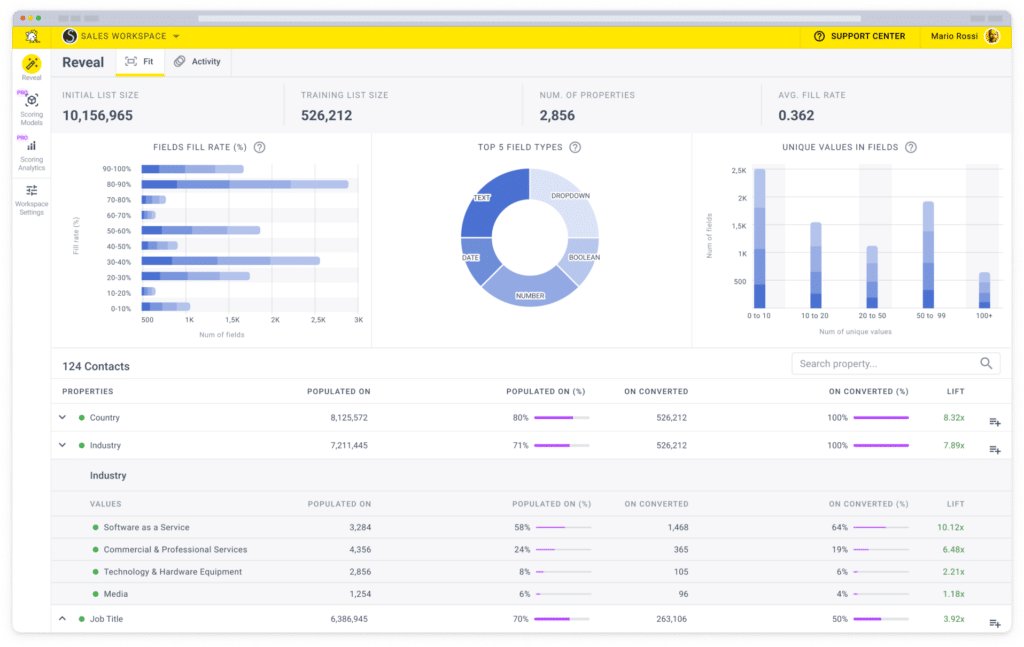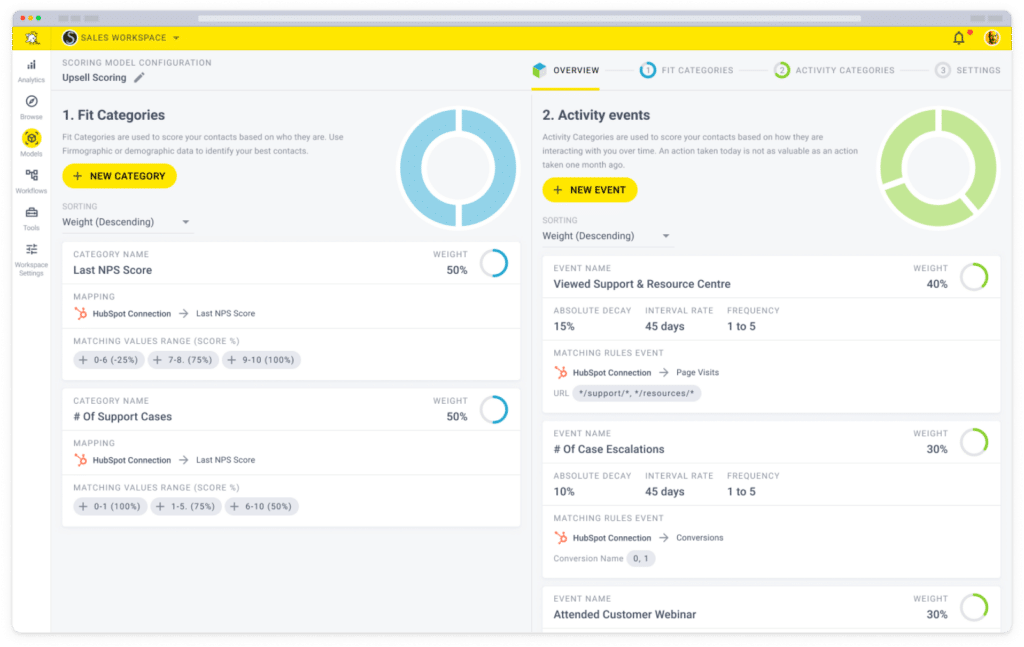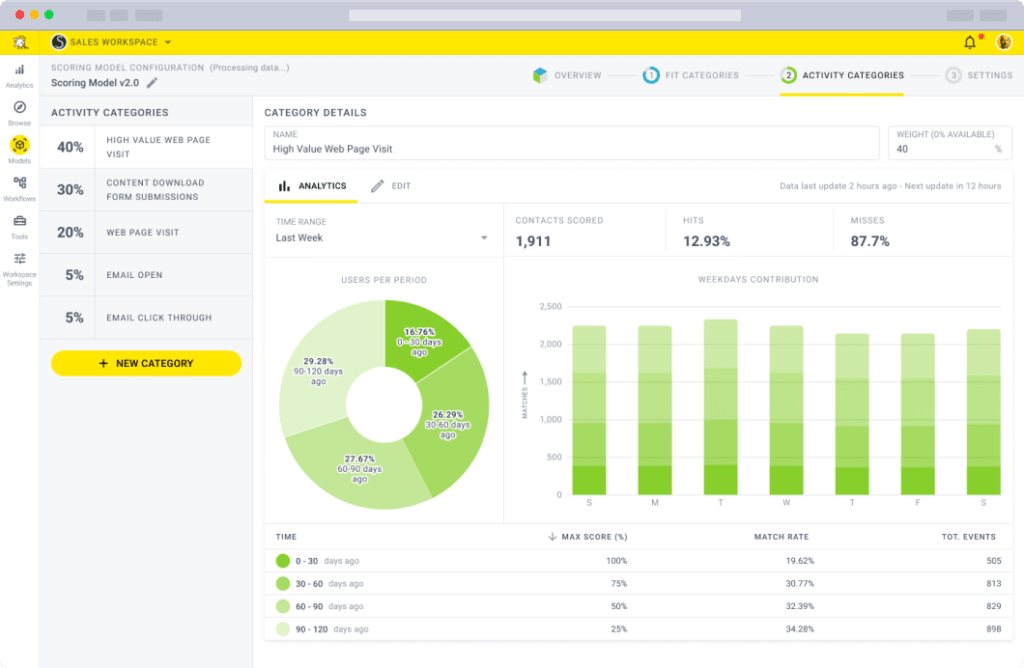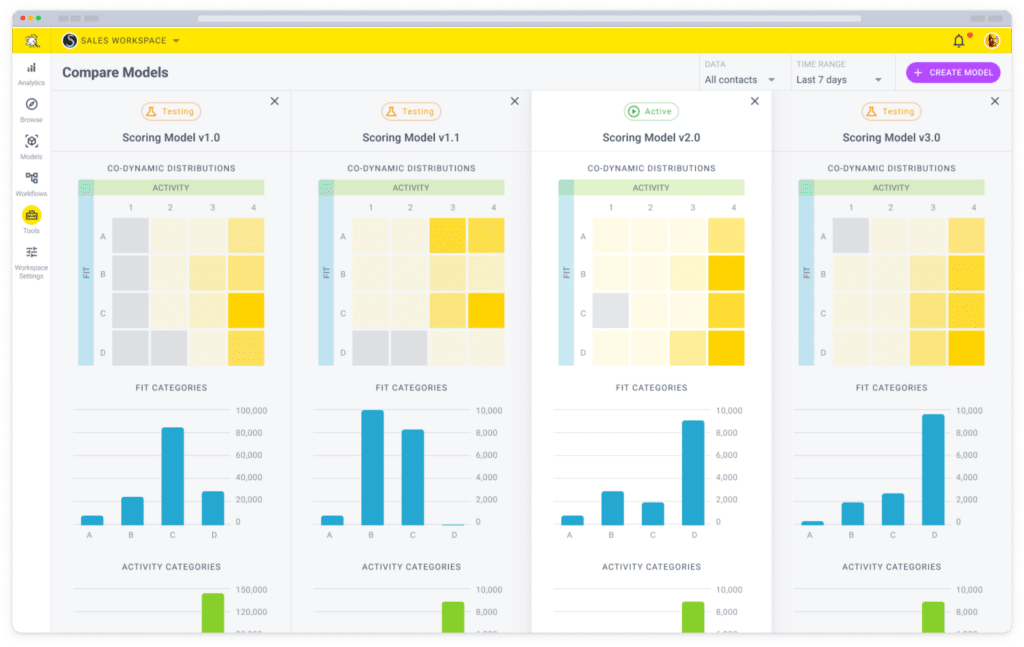

Unkover your competitors’ Marketing Secrets
Say goodbye to wasting hours on competitor analysis by equipping your team with an AI-driven, always-on competitive intelligence platform.


Say goodbye to wasting hours on competitor analysis by equipping your team with an AI-driven, always-on competitive intelligence platform.

Stay Ahead with AI-DRIVEN Competitive Intelligence
Unkover is your AI-driven Competitive Intelligence team delivering critical updates about your competitors the moment they happen:
Track your competitors website changes
Why spend all day stalking the competition when you don’t have to?
With Unkover, you’ll know instantly when your competitors tweak their messaging or shake up their pricing. No more endless scrolling through their sites or second-guessing your strategies.
Let us do the heavy lifting for you, ensuring you’re always in the loop by notifying you the moment a critical change happens on your competitor’s pages.
Sit back, relax, and keep winning—Unkover makes sure you’re not just in the game, you’re always a step ahead.


Read your competitors emails
Companies love updating their customers and prospects about relevant news, product updates, and special offers.
That juicy info from your competitors? It’s yours too. Unkover will automatically capture all their emails and bring them right to your doorstep—accessible to your entire team, anytime.
[COMING SOON: Our fine-tuned AI will sift through these emails, extract key information and send them over to the best team within your org. Less noise, more signal!]
We hear you! Unkover’s goal is not to flood you with tons of data points that no one in your team will ever read. We gather competitive intelligence from thousands of data sources and use AI to highlight actionable information to the right team in your company.
Say goodbye to noise. We’re 100% signal.
ROADMAP
We’re excited to get Unkover in your hands as soon as possible and keep building the best competitive intelligence tool with your precious feedback. The roadmap for the next few months is already exciting, so take a look!
While we build and deliver, here’s our promise to you: as an early tester and customer, you’ll lock in an exclusive bargain price we’ll never offer again in the future.

Spy on your competitors’ full marketing strategy: social, ads, content marketing, email flows, and more.

Track competitive Win/Loss analysis and build battle cards. Get alerted at every pricing change.

Get immediate alerts when competitors announce new features or major releases. Identify strengths and weaknesses from online reviews.

Get the competitive intelligence you need where you need it: Slack, eMail, MS Teams, Salesforce, Hubspot, Pipedrive and more.
slack integration
Unkover’s Slack integration lets you keep your whole team up to speed with your competitors’ updates.

Join now to lock in an exclusive 50% lifetime discount
For startups and small teams, it’s the essential toolkit you need to keep an eye on a select few competitors.

Up to 5 competitors

50 pages monitored

10 email workflows

3-day data refresh
$39
/per month
$ 79
50% discount
Billed annually
For growing businesses, it allows you to monitor more competitors, pages, and email workflows.

Up to 10 competitors

100 pages monitored

20 email workflows

1-day data refresh
$79
/per month
$ 159
50% discount
Billed annually
For large companies, it is tailored to meet the needs of multiple teams needing granular insights.

Custom number of competitors

Custom number of pages monitored

Custom number of email workflows

Hourly data refresh
Custom price
Billed annually

Long gone are the days of selling to C-suite executives.
Or is it?
Today, the PLG motion involves a bottom-up approach where your product speaks directly to the needs of your end users.
In this guide, we’ll show you how to build your PLG motion from the ground up, and explain why, despite using your product as a main acquisition vehicle, you still need a sales-assisted model.
Product-led growth (PLG) motion is a go-to-market strategy where the product is the primary vehicle for acquisition, activation, and expansion.
Unlike sales-led motion, where customers interact with a salesperson, product-led growth operates on a self-service model:
Customer signs up for a freemium or free trial > explores the features > upgrades to paid plan
With PLG motion, trial users convert to paid customers with no action on your part. 🙂
Your PLG motion will evolve into a product-led sales model at some point.
As you move upmarket to acquire enterprise customers, you’ll realize these bigger companies require more one-on-one guidance and customized development.
Beekast, for example, sells a meeting management platform to businesses of all sizes. It offers smaller companies a self-served plan, and assigns a sales team and dedicated customer success manager for enterprises.
Try these tactics, sorted according to the AARRR framework, to target end users—all the way from acquisition to referral.
Metrics - Site traffic - Customer acquisition cost - Conversion rate - Average revenue per customer - Revenue per channel
Acquisition is the process where companies attract customers. It comprises the following stages: awareness, consideration, evaluation, and conversion.
It sounds straightforward, but companies waste billions of dollars globally chasing after the wrong ideal customer profile (ICP). If you don’t know who your best-fit customers are, your marketing efforts are dead in the water before you even begin.
Consider using Breadcrumbs to identify your best customers today.
Automatically grab your entire marketing, sales, and product data into one place, and pinpoint the specific attributes and actions that impact your company’s revenue.
Here’s how it works:
You’ll end up with a report similar to the one below. Here, you can spot the industries and job titles of your most profitable customers today.

Update your ICP accordingly.
For best results, reach out to these customers for an interview. Gather your new customer insights into a buyer persona, and narrow down the relevant channels, content, and conversations that speak to these prospective buyers.
High-intent keywords boast higher conversions, as they’re usually performed by sales-ready prospects lower in the funnel.
It also doesn’t hurt that these keywords have lower competition, which makes it easier for newer sites to rank on the SERPs.
Explore alternatives + competitors keywords and weave in your product as an irreplaceable solution. Rumor has it these queries have the highest average conversion rate (8.43%).
Sponsor a non-competing brand that shares your audience. All-in-one writing app ButterDocs, for example, sponsored an issue of Superpath’s newsletter.

A fitting collaboration, considering the Superpath community boasts 14,000+ content professionals.
Customers rarely use a product the way it’s shown in demos.
This is particularly true if you run a horizontal SaaS startup with diverse customers across industries.
One solution to this problem?
Adding an interactive product demo—especially if your product’s UI, according to Ashley Lewin, is the “aha” moment itself.
“The interactivity really helps to grab someone while they’re in the research phase,” says the senior director of demand generation at Refine Labs.
Note how Guru onboard first-time users through an interactive demo.
Known for its enterprise AI search, intranet, and wiki—all terrific features that require an in-depth tour to fully experience the value—it lets them navigate around the platform without filling in a lengthy “Request a Demo” form.

Build these interactive demos with tools like Navattic and Demoboost.
By adding them to your PLG motion efforts, you start the onboarding process right from the get-go.
Metrics - Visitor-to-sign-up rate - Time to value - Activation rate - Feature adoption rate - Number of daily active users - Trial-to-customer conversion rate
Activation is the process where visitors experience meaningful value from your product (a.k.a. “aha” moment).
Collect zero-party data during onboarding to personalize every user’s experience. Note how Causal, a modern business planning platform, prompts new users for their job profile, goal, and the finance tools they used in its product-led onboarding. It uses these attributes to create unique experiences tailored to individual customers.

Include contextual tooltips and in-app messages to highlight valuable features and guide users to the next step. Track friction points and implement surveys to gather feedback to further optimize the user journey.
Use a tool like Breadcrumbs to nurture these users from activation to adoption (note: this is the stage where users experience repeated value from your product and is using it consistently).
Here’s how you can identify these product qualified leads (PQLs) automatically:
Breadcrumbs will then display a detailed view of your users’ product usage and engagement data, and send all scoring information back to your CRM.

Here, you can trigger your automated onboarding email sequence and convert your PQLs to paid customers.
By integrating your product within a new user’s tech stack, you streamline and improve their workflow, eventually boosting adoption and conversions.
Suppose a sales manager struggles to identify upsell opportunities and churn risks on HubSpot.
They might integrate it with Breadcrumbs, a third-party contact scoring system, to extend their CRM functionality.
It won’t be long before they outgrow Breadcrumbs’ free plan and upgrade to a paid account.
Metrics - Customer churn - Retention rate - Customer health score - Customer satisfaction score
Retention is the process where paid customers continue using your product and come back for more.
U.S. companies could save over $35.3 billion per year if they focus on keeping their existing customers happy.
You already know retaining customers is far more profitable than acquiring new ones—but where does one even begin?
Take a leaf from Clearscope’s book. It frequently runs webinars to teach users SEO from the industry’s best and educate them on how to make the most of its keyword optimization tool.

Co-partner with experts in your field (tip: ask customers who they want to learn from).
Run an office hour to connect with them.
Share upcoming product updates and learn more about their challenges in Q&As.
Learn more about customer retention in this guide.
Metrics - Net new monthly/annual recurring revenue - Expansion monthly/annual recurring revenue - Revenue churn - Customer lifetime value
(Expansion) revenue refers to the additional revenue from cross- and upselling existing customers.
According to 72% of sales professionals, 1-30% of their company’s revenue comes from upselling.
Looking at this figure, there’s untapped potential for generating more revenue from existing customers.
So, where do you start?
Automatically identify cross- and upsell opportunities on Breadcrumbs.
Here’s how it works:
Breadcrumbs will send all scoring information back to your primary data source, notifying your customer success reps whenever a client hits the scoring threshold.

Pitch them a higher tier plan accordingly.
If you’re seeing your:
..then, says Gary Amaral, co-founder and CMO of Breadcrumbs, it’s time to add product-led sales into your PLG motion. While you’re at it, consider hiring a C-suite sales leader (e.g., chief revenue officer) to oversee your sales expansion efforts.
Earlier on, we showed you how to connect your CRM and product analytics tools with Breadcrumbs to identify PQLs.
With this newly product-led sales motion, you’ll want to identify your high-value recurring revenue SQLs automatically.
Here’s how it works on Breadcrumbs:
Breadcrumbs will send all scoring information back to your CRM. Instead of going through the SQLs’ emails in your CRM in one tab and product usage data in another, you can now access all high-touch customers’ data at every touchpoint in a single source of truth.

Not only does this help the sales team align their shared PLG metrics with marketing and product on one platform, but it also helps them quickly identify these high-stake accounts in the shortest possible time.
Book a demo with Breadcrumbs to identify high-value SQLs and close bigger deals today.
Whether you’re in the early days of setting up PLG motion or moving upmarket to pursue bigger clients, conduct competitive intelligence to gain an advantage in your industry.
This can look like in a myriad of ways.
Like conducting a pricing page analysis to understand where you stand among competitors and optimize your pricing plans to stay profitable.
Or researching what competitors are ranking and not ranking on the SERPs… and going after the latter.
Determines what gives you an edge in your competitors’ research. Accelerate revenue and protect your market share.
Metrics - Net Promoter Score - Affiliate commissions - Percentage of active affiliates - Online reviews and ratings - Social media engagement
Referral is the last process of the AARRR framework in PLG motion. Here, customers become advocates and recommend your product to other users.
Let your best customers do the work for you.
Affiliate, referral, partnership, or call-it-whatever-you-want, these programs reward existing clients for referring new customers.
DashThis awards customers with a 20% recurring commission every month. In order for commissions to be approved, referees need to sign up within 90 days once they clicked on the referral link and stay as clients.

Not all SaaS startups are suitable for affiliate programs, however.
Ahrefs shut down its affiliate program after only a few years, citing the grueling work for then a one-person marketing team and conflicts of interest with big-name affiliates, amongst others.
If you run a small startup with a lean marketing team, you’re better off with the tactic below.
This is the referral tactic that grew Ahrefs’ customer base:
Reputation > Commission
By focusing on building an irresistible product “as opposed to just paying [customers], when there’s really nothing interesting to be said in the first place,” Ahrefs won hearts and minds, and eventually climbed the ranks to become one of the biggest SEO tools in the market.
No successful company is truly “product-centric.”
You need both sales and PLG motion to accelerate revenue.
At some point in the growth stage, you will require a sales team to scale your business—whether it’s upselling a customer or closing a high-value enterprise client.
Breadcrumbs is a fully featured contact scoring platform that uncovers hidden revenue opportunities across the entire funnel. Book a demo with Breadcrumbs to start your PLG motion and close bigger deals today.